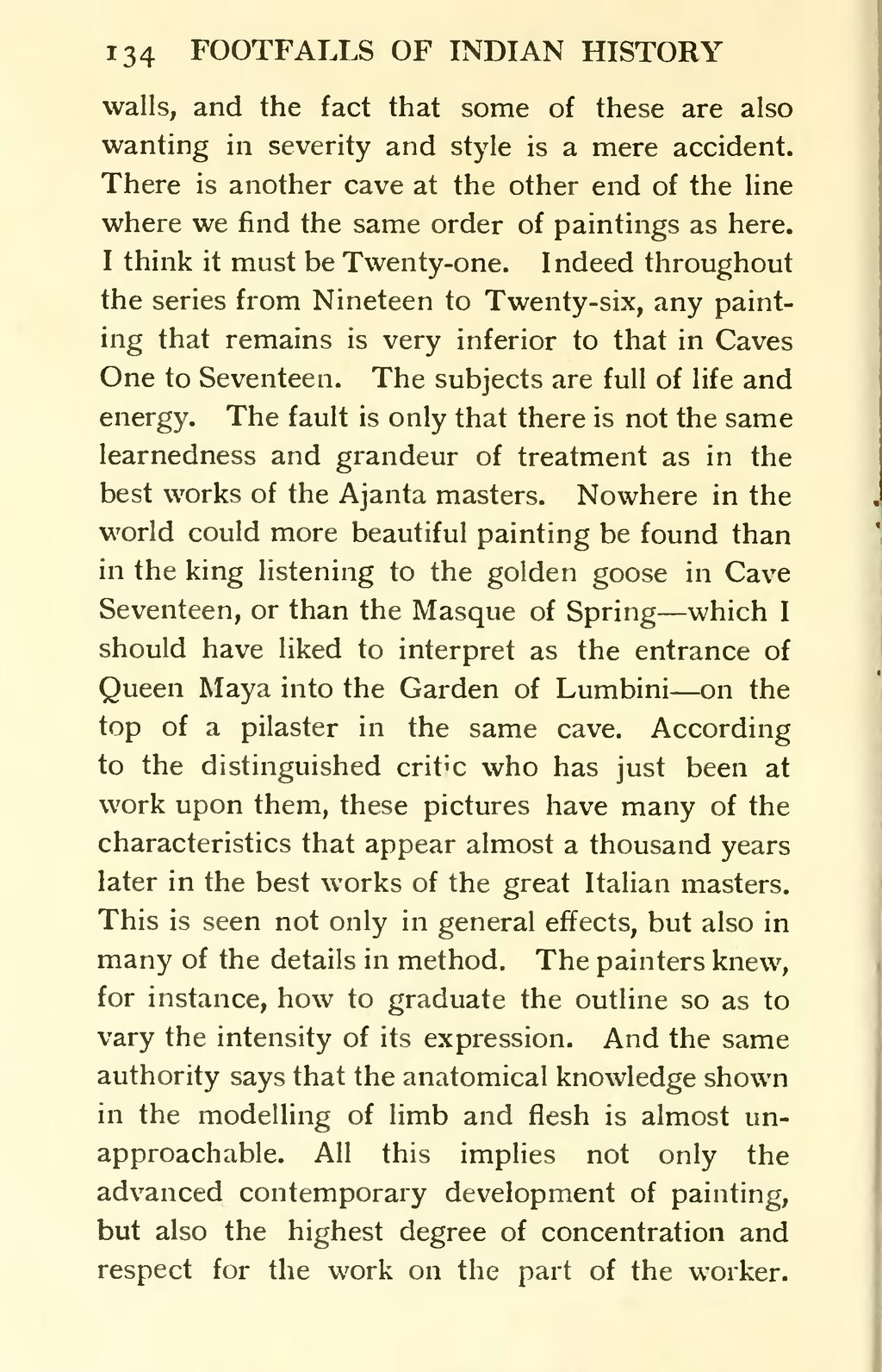134 FOOTFALLS OF INDIAN HISTORY
walls, and the fact that some of these are also wanting in severity and style is a mere accident. There is another cave at the other end of the line where we find the same order of paintings as here. I think it must be Twenty-one. Indeed throughout the series from Nineteen to Twenty-six, any painting that remains is very inferior to that in Caves One to Seventeen. The subjects are full of life and energy. The fault is only that there is not the same learnedness and grandeur of treatment as in the best works of the Ajanta masters. Nowhere in the world could more beautiful painting be found than in the king listening to the golden goose in Cave Seventeen, or than the Masque of Spring — which I should have liked to interpret as the entrance of Queen Maya into the Garden of Lumbini — on the top of a pilaster in the same cave. According to the distinguished crit'C who has just been at work upon them, these pictures have many of the characteristics that appear almost a thousand years later in the best works of the great Italian masters. This is seen not only in general effects, but also in many of the details in method. The painters knew, for instance, how to graduate the outline so as to vary the intensity of its expression. And the same authority says that the anatomical knowledge shown in the modelling of limb and flesh is almost unapproachable. All this implies not only the advanced contemporary development of painting, but also the highest degree of concentration and respect for the work on the part of the worker.
